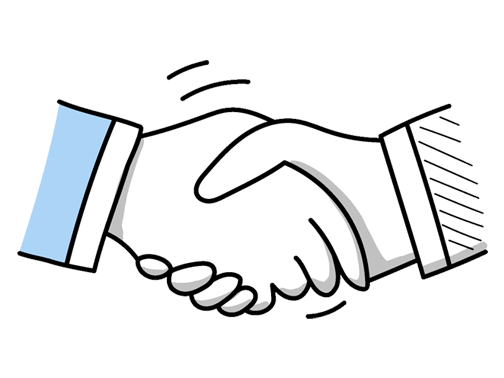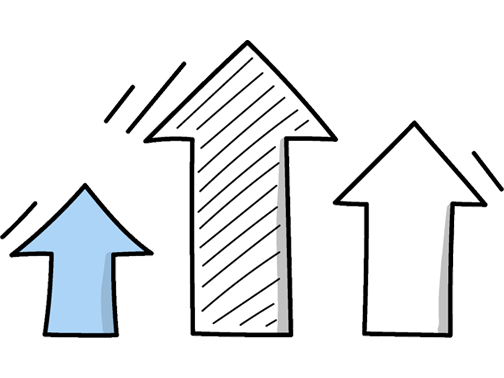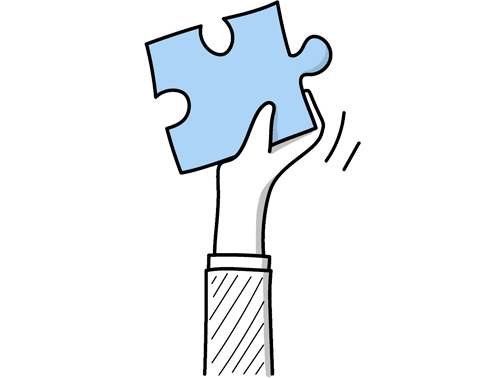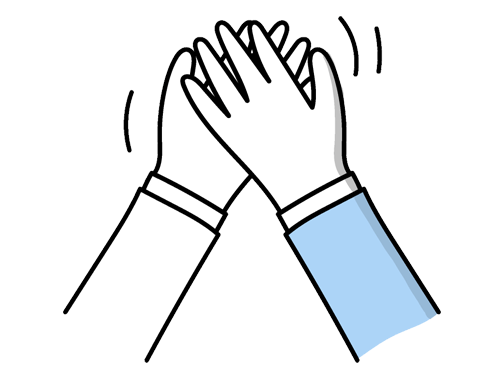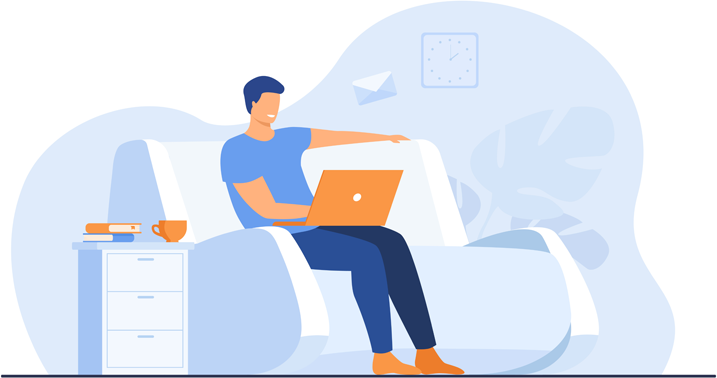Illustrator Interview Questions (2025 Guide)
Find out common Illustrator questions, how to answer, and tips for your next job interview
Practice Interviews Online - Identify your strengths and weakness in a realistic Illustrator mock interview, under 10 minutes
Practice Now »Illustrator Interview Questions
Hiring managers ask this question to ensure you have the technical skills required for the role and can use industry-standard tools effectively. You need to mention the specific illustration software you know well, like Adobe Illustrator or Procreate, and briefly highlight your experience with them.
Example: I’m comfortable working with Adobe Illustrator and Photoshop, which I use regularly for both vector and raster projects. I also have experience with Procreate for digital sketching on the iPad, which helps me bring ideas to life quickly and intuitively. Depending on the project, I sometimes use InDesign for layout work to ensure everything looks polished and professional.
Interviewers ask this to see how you manage pressure and prioritize tasks under time constraints. You need to explain a specific situation where you stayed organized, focused, and delivered quality work on time.
Example: Sure. Once, I had to create a detailed editorial illustration with less than 24 hours’ notice. I immediately prioritized key elements, sketched rapidly to lock in the concept, then focused on clean, efficient execution. Keeping calm and breaking the task into manageable steps helped me deliver on time without compromising quality. It was a great reminder of how clarity and focus can turn pressure into productivity.
Hiring managers ask this to see if you can stay flexible and professional when projects shift unexpectedly. You should explain how you adapt your style or approach quickly, communicate clearly with clients and team members to set expectations, and manage your workload to keep quality and deadlines on track.
Example: When last-minute changes come up, I stay flexible and open, quickly reassessing the project to see what’s possible without compromising quality. I keep communication clear with clients and the team to manage expectations and find practical solutions. For example, on a recent project, a sudden style tweak meant adjusting the palette, but by staying calm and discussing options promptly, we met the deadline smoothly and delivered a result everyone was happy with.
Employers ask this question to see if you can maintain a positive and productive work environment despite differing opinions. You need to say that you listen actively, communicate respectfully, and seek collaborative solutions to resolve conflicts.
Example: When disagreements arise, I focus on understanding everyone's perspective without rushing to judgment. In a past project, we had differing views on style choices, so I encouraged open dialogue, which helped us blend ideas effectively. I believe that respectful communication and a willingness to collaborate not only resolve conflicts but often lead to stronger, more creative outcomes.
What they want to understand is how you handle the challenge of blending your artistic vision with the client's needs to deliver a successful project. You should say how you clarified the client's goals, introduced your creative ideas within their guidelines, and maintained clear communication to adapt based on their feedback.
Example: Sure! Here’s a natural, concise answer you can use:
In a recent project, a client wanted a playful children's book illustration but with strict brand colours. I carefully listened to their vision, then experimented with textures and layouts to keep it lively while honouring their palette. Throughout, I kept them updated, welcoming feedback to fine-tune the art. This collaboration ensured the final work was both creative and aligned with their expectations.
What they want to understand is how you function within a team and contribute to shared success as an illustrator. You should describe your typical role, such as leading concept development or contributing ideas, and explain how you maintain clear communication and offer support to teammates when challenges arise.
Example: In a team, I usually take a collaborative approach, ensuring my ideas complement others' work. I keep communication open, whether sharing sketches or discussing feedback, which helps us stay aligned. When challenges arise, I offer support by brainstorming solutions or lending a hand with tasks, fostering a positive environment. For example, on a recent project, I helped a teammate refine their concept by sharing constructive insights, which really boosted our final piece.
Hiring managers ask this to see how you organize ideas and solve problems creatively. You should explain your steps clearly, from initial inspiration and sketches to refining details and finalizing the artwork.
Example: Sure! When I start a project, I usually begin by understanding the story or message behind it. Then I sketch rough ideas to explore different directions. I like refining those drafts, focusing on mood and composition. Once the client and I agree on the concept, I move to detailed work, adding colour and texture. For example, on a book cover, I experimented with light and shadow to evoke the right atmosphere.
Hiring managers ask this to see if you understand the technical differences and constraints of each format. You need to say that you adjust resolution, color modes, and file types accordingly to ensure clarity and consistency across both print and digital media.
Example: When preparing illustrations for both print and digital, I focus on creating high-resolution files that maintain clarity across formats. I use colour profiles suited to each medium—CMYK for print and RGB for screens—to ensure colours stay true. Keeping details scalable and considering file formats helps, too. For example, I once designed a book cover that looked sharp both as a printed hardback and a digital thumbnail, maintaining impact in both versions.
Questions like this help interviewers understand how you cultivate creativity and stay inspired in your work. You should explain that you research diverse sources like art styles, culture, and nature, integrate personal experiences like travel or daily life, and organize your ideas using tools such as inspiration journals or digital folders.
Example: I draw inspiration from a mix of everyday life, nature, and art history, often jotting down ideas or sketching spontaneously. Personal experiences, like travel or conversations, also shape my work, adding depth and authenticity. To keep everything organized, I maintain mood boards and digital folders, which help me refine concepts and ensure the final illustration feels both fresh and connected to the original spark.
What they want to know is if you understand the difference between vector and raster graphics and how you use each in your work. You need to explain that vector graphics are scalable and ideal for logos and illustrations, while raster graphics are pixel-based and best for detailed images like photos, highlighting your practical experience with both.
Example: I’ve worked extensively with both vector and raster graphics, appreciating how each suits different projects. For logos and icons, I rely on vector tools like Adobe Illustrator to ensure scalability without loss of quality. When it comes to detailed illustrations or textures, I turn to raster programs such as Photoshop, which offer rich control over colors and shading. Combining both often helps achieve a polished, versatile result.
Hiring managers ask this to see how you handle obstacles and adapt creatively under pressure. You need to clearly describe the challenge you faced, explain the steps you took to overcome it, and share the positive result or lesson learned from the experience.
Example: One of my toughest projects involved creating a detailed editorial illustration under a tight deadline while incorporating complex visual metaphors. To manage this, I broke the task into smaller parts and stayed in close contact with the editor to ensure clarity. This approach not only helped me deliver on time but also deepened my ability to balance creativity with practicality, a skill I’ve applied successfully in many projects since.
Hiring managers ask this question to see how you ensure your work stays uniform and professional across projects. You need to explain your use of consistent color palettes, style guides, software tools like layers and templates, and organized workflows such as detailed briefs or storyboards to maintain visual and stylistic consistency.
Example: I focus on setting clear style guidelines early on, like consistent colour palettes and line weights, which helps keep everything cohesive. I use tools such as layers and templates in software like Photoshop or Procreate to speed up the process while maintaining uniformity. Staying organised with well-named files and version control also means I can revisit and adjust work without losing that consistent feel throughout a project.
What they want to know is how you stay organized and meet deadlines when juggling several projects at once. You need to explain that you prioritize tasks by deadline and importance, use tools like calendars or to-do lists to keep track, and stay flexible by communicating and adjusting plans as needed.
Example: When juggling several projects, I start by assessing which deadlines are tightest and which work will have the biggest impact. I then use tools like Trello or simple to-do lists to keep track of progress. If priorities shift, I stay flexible and communicate clearly with clients or team members to adjust expectations. Once, balancing three commissions, this approach helped me deliver quality work on time without feeling overwhelmed.
Interviewers ask this to see how well you collaborate and add value in a team setting. You need to describe a specific project, highlight your role clearly, and explain how your efforts helped achieve the team's success.
Example: Sure! In a recent project designing an illustrated children’s book, I collaborated closely with the author and editor. I contributed by creating engaging character designs that matched the story’s tone and ensured consistency across pages. By regularly sharing drafts and feedback, we refined the visuals together, resulting in a vibrant final product that resonated well with young readers and the publishing team alike.
Employers ask this question to see your artistic style, skills, and how you reflect on your own work. Show a piece that highlights your strengths and briefly explain what makes it special or challenging to demonstrate your creativity and growth.
Example: One piece I’m proud of is a children’s book illustration I created last year. It allowed me to blend vibrant colours with playful characters, bringing the story to life in a way that resonated with young readers. Seeing how much joy it brought to kids and their parents made the project truly rewarding and reinforced my love for creating engaging visual stories.
Interviewers ask this to see how well you communicate and cooperate in a team setting, which is crucial for successful projects. You need to explain how you shared ideas clearly, coordinated tasks with others, and contributed your creative skills to achieve the project goals.
Example: Sure! Here’s a polished, natural-sounding response:
In a recent project, I worked closely with designers and writers to create a children’s book. We regularly exchanged ideas to ensure the illustrations matched the story’s tone. I focused on bringing characters to life while adapting feedback smoothly. Collaborating this way helped us meet deadlines and deliver a cohesive final product everyone felt proud of.
This interview question aims to see if you are proactive about learning and adapting in a rapidly evolving field. You need to say that you regularly follow industry blogs, take online courses, and participate in creative communities to stay current with new tools and techniques.
Example: I keep up with new illustration tools by regularly exploring industry blogs and following talented artists on social media. Attending workshops or online tutorials also helps me pick up techniques and software updates. For example, I recently tried out a new digital brush set that enhanced my textures, which I discovered through a creative community forum. Staying curious and connected naturally keeps my skills fresh and relevant.
Employers ask this to see how you handle criticism and improve your work collaboratively. You need to explain a specific project where you received feedback, how you adjusted your illustration accordingly, and what you learned from the experience.
Example: Sure. On one project, I created a book cover illustration that initially missed the author’s vision for tone. After receiving their feedback, I adjusted the colour palette and added subtler details to better capture the mood. This revision not only improved the final design but also strengthened my understanding of how important clear communication is throughout the creative process.
Questions like this help interviewers understand your unique artistic voice and how you approach your work. You need to clearly identify a project that showcases your signature style and explain what elements make it representative of your creativity.
Example: One project that really captures my style is a children's book I illustrated recently. It blends playful lines with soft colours, creating a warm, inviting feel that connects with both kids and adults. I enjoy balancing detail with simplicity, and this project allowed me to do just that—bringing characters to life in a way that feels both imaginative and approachable.
Employers ask this to see if you can accept critique and improve your work collaboratively. You need to show that you listen carefully, reflect on feedback thoughtfully, and use it to enhance your illustrations while maintaining your creative vision.
Example: When I receive feedback, I take time to really understand the client’s perspective and see how it aligns with the project’s goals. For example, if someone suggests adjusting colours, I experiment and find a balance that keeps the original vision intact while improving the piece. It’s a collaborative way to refine work without losing its essence, and I find it helps me grow creatively with each project.
Interviewers ask this to see how you prioritize your best work and tailor your portfolio to a specific audience or job. You need to explain that you choose pieces that showcase your strongest skills, style, and versatility relevant to the role you're applying for.
Example: When choosing pieces for my portfolio, I focus on work that best showcases my style and versatility while aligning with the type of projects I want to pursue. For example, if I’m aiming for editorial illustration, I include dynamic, narrative-driven pieces. I also consider the balance between technical skill and creativity to ensure the portfolio feels cohesive and reflects my growth as an artist.
This interview question helps the interviewer understand your problem-solving skills and creativity under pressure. You need to briefly describe the challenge, your approach to finding a solution, and the successful outcome to show your ability to handle complex illustration tasks effectively.
Example: In a recent project, I needed to create detailed illustrations that matched a client’s evolving vision. Midway, they requested a significant style shift, which challenged the existing work. To resolve this, I revisited the core concept, experimented with different techniques, and maintained clear communication. This approach helped me adapt quickly without compromising quality, ultimately delivering artwork that exceeded expectations while meeting tight deadlines.
Employers want to see that you handle technical problems methodically and use resources wisely to minimize downtime. You should say that you first identify the root cause by checking settings, then consult manuals or forums, and finally test your fix to ensure the software works properly.
Example: When I run into technical issues with my illustration software, I start by breaking down the problem to understand what’s causing it. I usually check forums, tutorials, or the software’s support first to see if others have faced similar glitches. Then, I try different solutions step-by-step, making sure each one actually resolves the issue before moving on. For example, once a plugin caused a crash, and isolating it helped me fix the problem without losing my work.
Employers ask this question to see how you stay productive and creative despite challenges. You should explain practical ways you overcome blocks, like taking breaks, experimenting with new methods, and setting small goals to keep motivated.
Example: When I hit a creative block, I like to switch gears—sometimes I sketch something unrelated or take a short walk to clear my mind. Trying different styles or tools often sparks new ideas. Staying consistent with my routine helps me push through those dry spells, so even when motivation dips, discipline keeps me moving forward. It’s about being patient with the process and open to where inspiration might come from.
What they want to know is how you keep everyone on the same page to avoid misunderstandings and ensure the project runs smoothly. You should say you actively listen by asking questions, provide regular updates, and adjust how you communicate based on who you're talking to, like using visuals for non-designers.
Example: I focus on truly listening to what clients and team members are saying so I can grasp their vision and concerns clearly. I keep everyone in the loop with regular updates, which helps avoid surprises and keeps the project on track. Also, I tailor how I communicate—whether it’s a quick sketch explanation for a client or more detailed notes for the team—making sure the message fits who I’m speaking to.
Ace your next Illustrator interview with even more questions and answers
Common Interview Questions To Expect
The interviewer is looking for a brief overview of your background, experience, skills, and interests related to the role of an illustrator. Focus on relevant information that showcases your qualifications for the position.
Example: Sure! I have been drawing and creating art since I was a kid, and I studied illustration at university. I have experience working on various projects, from children's books to editorial illustrations. I am passionate about bringing stories to life through my artwork.
The interviewer is looking for your passion for the role, your understanding of the company and industry, and how your skills and experience align with the position. You can answer by discussing your love for illustration, your admiration for the company's work, and how your skills make you a strong fit for the role.
Example: I've always had a passion for illustration since I was a kid, and I love bringing stories to life through art. I've been following your company's work for a while now and I'm really impressed with the creativity and quality of your projects. I believe my skills in digital illustration and storytelling make me a great fit for this role.
The interviewer is looking for examples of how you manage stress and stay productive under pressure. Be sure to provide specific examples and demonstrate your ability to handle challenging situations effectively.
Example: I handle pressure by prioritizing tasks, creating a schedule, and staying organized. For example, when I have a tight deadline for a project, I break it down into smaller tasks and set realistic goals for each day. This helps me stay focused and deliver high-quality work on time.
The interviewer is looking for examples of how you have collaborated with others, communicated effectively, and contributed to team goals. Be prepared to discuss specific projects and outcomes.
Example: Sure! In my previous role as an illustrator, I worked closely with a team of designers and art directors to bring our creative vision to life. We communicated regularly to ensure our work aligned with the overall project goals, and I was able to contribute my unique artistic style to the team's success. Overall, it was a collaborative and rewarding experience that taught me the importance of teamwork in achieving great results.
Interviewees can answer by acknowledging a mistake, explaining how they rectified it, and highlighting lessons learned. Interviewers are looking for honesty, accountability, problem-solving skills, and ability to learn from mistakes.
Example: Yes, I once accidentally misspelled a client's name on a project. I immediately reached out to the client, apologized, and corrected the error. I learned the importance of double-checking all details before finalizing a project.
Company Research Tips
The company's website is a goldmine of information. Look for details about the company's history, mission, and values. Pay special attention to any sections about their work culture or team. As an illustrator, check out their portfolio or any visuals they have on their site. This will give you an idea of their preferred style and could give you an edge during the interview.
Tip: Don't just skim through the website. Take notes and try to understand the company's brand and visual identity.
Social media platforms can provide a more informal view of the company. Look at their posts, the comments, and how they interact with their audience. This can give you insights into their brand personality and how they communicate. For an illustrator role, their Instagram or Pinterest could be particularly useful to understand their aesthetic.
Tip: Look at the visuals they post, but also pay attention to the captions and comments. This can give you a sense of their tone and voice.
Understanding the company's position in the market can be very useful. Research their main competitors and see how they differentiate themselves. This can give you insights into their unique selling points and how they might want to be portrayed visually.
Tip: Try to find out what makes the company stand out from its competitors. This could be a unique style, a particular focus on customer service, or a specific product feature.
Look for any recent news articles or press releases about the company. This can give you up-to-date information about their current projects, achievements, or future plans. As an illustrator, this could give you ideas for questions to ask during the interview or topics to discuss.
Tip: Use a variety of sources to get a balanced view. Don't just rely on the company's own press releases.
What to wear to an Illustrator interview
- Smart casual attire
- Clean, well-fitted jeans
- Comfortable, polished shoes
- Neutral or muted colour palette
- A tailored blazer for a professional touch
- Avoid overly bright or flashy patterns
- Carry a portfolio of your work
- Minimal accessories
- Well-groomed appearance
- Avoid wearing too much perfume or cologne
